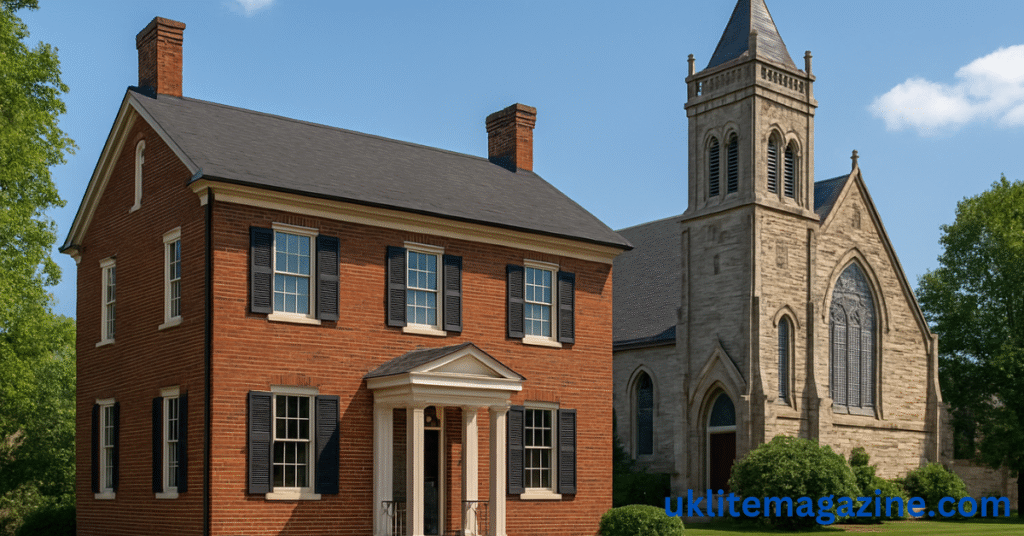Have you ever come across the term “Presbyterian Minister House” and wondered what it means? This unique phrase refers to a specific type of residence with both religious and historical significance. In this article, we’ll explore what a Presbyterian minister house is, its origins, purpose, and why it remains relevant even today.
What Is a Presbyterian Minister House?
A Presbyterian minister house is a residence traditionally provided by a Presbyterian church for its minister (also known as a pastor or reverend). This house, often located near the church, is also called a manse.
The word manse comes from the Latin word mansus, meaning “dwelling.” In the Presbyterian tradition, a manse is more than just a home; it symbolizes the church’s support and respect for its spiritual leader.
Historical Background
Origin in Scotland
Presbyterianism originated in Scotland during the 16th century as part of the Reformation. Ministers were often provided with homes to live near the church, allowing them to serve the community full-time.
These homes were often modest but built to last. Over time, especially in the 18th and 19th centuries, the tradition spread to other parts of the world, including the United States, Canada, and Australia.
Role in American History
In the United States, Presbyterianism became one of the most influential Protestant denominations. Minister houses were common in rural and urban areas alike, often representing the moral and spiritual center of a town. Some of these homes are now preserved as historic landmarks.
Purpose and Function
A Presbyterian minister house serves multiple purposes:
-
Residential: Provides a home for the minister and their family.
-
Practical: Enables the minister to live close to the church for daily duties.
-
Symbolic: Represents stability, leadership, and the church’s commitment to its clergy.
-
Community Role: Sometimes used for small group meetings, counseling sessions, or church-related events.
Key Features of a Traditional Minister House
Here’s a breakdown of common characteristics found in many Presbyterian minister houses:
| Feature | Description |
|---|---|
| Location | Usually near or adjacent to the church |
| Architecture | Simple, durable design; colonial or Victorian styles in older homes |
| Interior Layout | Includes study/office space, family rooms, guest areas |
| Garden/Yard | Often includes a well-kept lawn or garden for reflection and gatherings |
| Church-Owned or Rented | May be owned by the church or leased depending on the congregation’s policy |
Modern-Day Significance
Today, not all Presbyterian churches offer a manse. Some provide housing allowances instead, allowing ministers to buy or rent their own homes.
However, many churches—especially in rural or historic communities—still maintain a minister house due to:
-
Tradition: Maintaining continuity with church history
-
Practicality: Cost-effective for smaller congregations
-
Community Presence: Keeps ministers close to their church families
Differences from Other Religious Residences
It’s important to note that while other Christian denominations also provide clergy housing (such as rectories or parsonages), a Presbyterian minister house is unique in its governance and symbolic value. In Presbyterianism, decisions are made democratically by elders and the congregation, including decisions related to clergy housing.
Preservation and Historical Value
Many older Presbyterian minister houses have been preserved as heritage properties. They serve as educational sites, reflecting:
-
Early architecture
-
Community planning
-
The role of faith in public life
In some cases, these homes are open to the public as museums or event venues.
Conclusion
The Presbyterian minister house is more than just a building—it’s a reflection of faith, tradition, and community service. From its Scottish roots to modern-day adaptations, it continues to serve a vital role in church life. Whether preserved as a historical site or actively used today, it remains a symbol of dedication and leadership in the Presbyterian faith.
Frequently Asked Questions (FAQs)
1. Is a Presbyterian minister house the same as a manse?
Yes, the terms are often used interchangeably. “Manse” is the traditional name for a minister’s house in the Presbyterian church.
2. Do all Presbyterian churches have a minister house?
No, many churches now provide housing allowances instead. However, some still maintain a traditional manse.
3. Who pays for the upkeep of the house?
Usually, the church is responsible for maintenance, repairs, and property taxes unless stated otherwise in a contract.
4. Can a former minister continue living in the house after retirement?
This depends on church policy. Some churches allow temporary stay after retirement, while others expect the house to be vacated for the next minister.
5. Are Presbyterian minister houses found only in the U.S.?
No, they exist in many countries where Presbyterian churches are present, such as Scotland, Canada, South Korea, and Australia.

